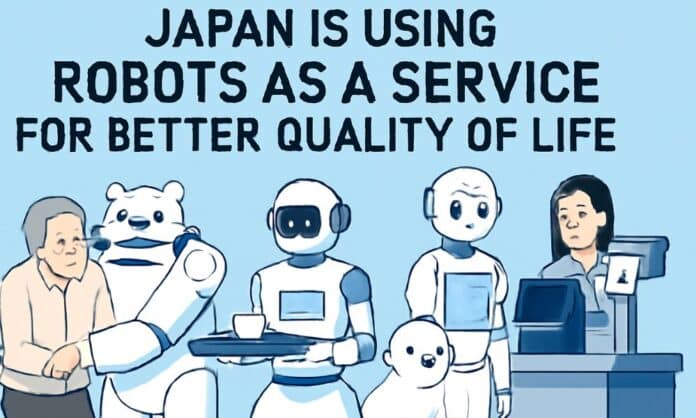Japan, renowned for its technological advancements, is at the forefront of integrating robots into daily life. Facing challenges like an aging population and labor shortages, the country is turning to robots as a service (RaaS) to enhance the quality of life for its citizens. This article delves into how Japan is utilizing RaaS across various sectors to address societal needs.
How Japan Is Using Robots As A Service
1. Patient Care: Robots as Companions and Caregivers
1.1 Robear: The Robot Nurse
In response to a growing older people, Japan has developed Robear, a bear-shaped robot designed to assist just like a nurse, in lifting patients into wheelchairs. This innovation aims to alleviate physical strain on human caregivers and provide gentle assistance to the older people.
1.2 AIREC: AI-Driven Patients Care Robot
AIREC is an AI-powered robot that can roll patients onto their sides, aiding in tasks like changing diapers or preventing bedsores. This technology showcases Japan’s commitment to integrating AI into healthcare to support the aging society.
2. Hospitality Industry: Enhancing Customer Experience
2.1 Robot Waiters in Cafés
Some cafés in Japan employ robot waiters controlled remotely by individuals with disabilities. These robots serve food and drinks, providing employment opportunities and enhancing customer service.
2.2 Henn-na Hotel: The Robot-Run Hotel
The Henn-na Hotel in Japan operates with minimal human staff, utilizing robots for tasks like check-in, luggage handling, and room service. This model demonstrates how automation can streamline operations and reduce labor costs.
3. Healthcare: Robots Assisting Medical Staff
3.1 HOSPI: Hospital Delivery Robot
Panasonic’s HOSPI robot autonomously delivers medications and supplies within hospitals, allowing medical staff to focus on patient care. This innovation improves efficiency and reduces human error.
Companion robots like Paro, a seal-like robot, provide emotional support to patients, particularly in nursing homes. These robots help alleviate feelings of loneliness and improve mental well-being.
4. Retail: Automating Customer Service
4.1 Newme Robots in 7-Eleven Stores
At the 2025 Osaka Expo, 7-Eleven stores showcased “newme” robots—remote-controlled avatars that assist customers with self-service tills and food orders. These robots help address labor shortages and enhance customer service.
4.2 Lawson’s Avatar Technology
Lawson, a Japanese convenience store chain, employs digital avatars controlled by remote staff to assist customers in multiple languages. This approach allows for flexible staffing and improved customer interaction.
Check out: What is Robotic Process Automation (RPA)?
5. Education: Robots Facilitating Remote Learning
5.1 Robot-Assisted Graduation Ceremonies
During the COVID-19 pandemic, Japanese universities utilized robots to facilitate remote participation in graduation ceremonies, allowing students to attend virtually and receive their diplomas.
5.2 Educational Robots in Classrooms
Robots are being introduced into classrooms to assist in teaching, providing interactive learning experiences and supporting students with functional needs.
6. Agriculture: Robots Enhancing Productivity
6.1 Autonomous Harvesting Robots
In rural Japan, robots are employed to autonomously harvest crops like tomatoes and rice, addressing labor shortages and increasing agricultural productivity.
6.2 Drone Technology in Farming
Drones are used for monitoring crop health, spraying pesticides, and optimizing irrigation, leading to more efficient and sustainable farming practices.
7. Transportation: Autonomous Vehicles and Robots
7.1 Autonomous Delivery Robots
Companies in Japan are developing autonomous robots for last-mile delivery, reducing the need for human couriers and improving delivery efficiency.
7.2 Robot-Assisted Public Transportation
In urban areas, robots assist in guiding passengers, providing information, and ensuring safety within public transportation systems.
Conclusion
Japan’s innovative use of robots as a service is transforming various sectors, from healthcare to hospitality, enhancing the quality of life for its people. By integrating robotics into daily life, Japan is addressing societal challenges and setting a precedent for other nations to follow.

